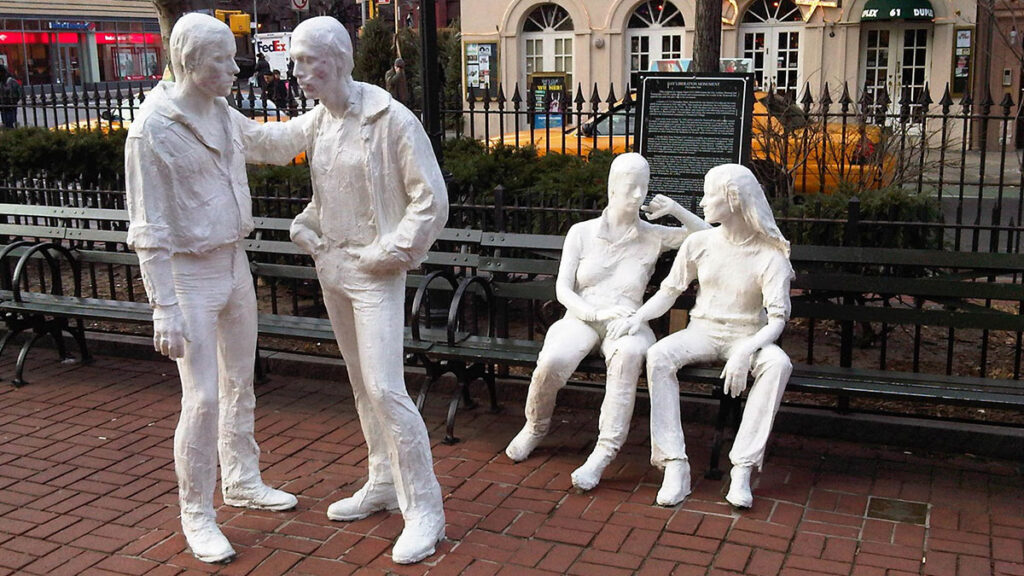LGBTQ+ History: 12 Important Memorials and Historic Sites
At Vacationer Magazine, we don’t regulate celebrating LGBTQ+ history for just one month. We never stop being proud. That means we embrace our history and culture 365 days non-stop.
No matter if you’re visiting San Francisco, New York City, Manchester, Amsterdam, or any points between, you should always honor the queer trailblazers that came before you.
So, in that spirit, we created a list of historic memorials, parks, and sites that pay homage to LGBTQ+ history. There are dozens of historical sites around the world, but here are a few to consider visiting especially if you’re a history buff or inquisitive traveler.
Stonewall National Monument (New York City)
Before the 1960s almost everything about living openly as an LGBTQ+ person was illegal. New York City laws against queer activities were harsh, and the Stonewall Riot on June 28, 1969, is a milestone for our rights and provided the momentum for a movement. You could probably spend a day or two visiting famous LGBTQ+ historical sites in NYC, but if you’re at Stonewall Inn, you can’t leave the area without checking out American artist George Segal’s famous sculpture, The Gay Liberation Monument, in Christopher Park.
You should also consider grabbing a drink at Julius, known as New York City’s oldest continuously operating gay bar. Open since 1840, the bar became the backdrop to the historical event called the “Sip-In,” where the Mattachine Society, one of the first LGBTQ+ groups, challenged the practice of bars not allowing queer patrons to drink on the premises. Julius remains a landmark for LGBTQ activism with Mattachine nights every third Thursday of the month.
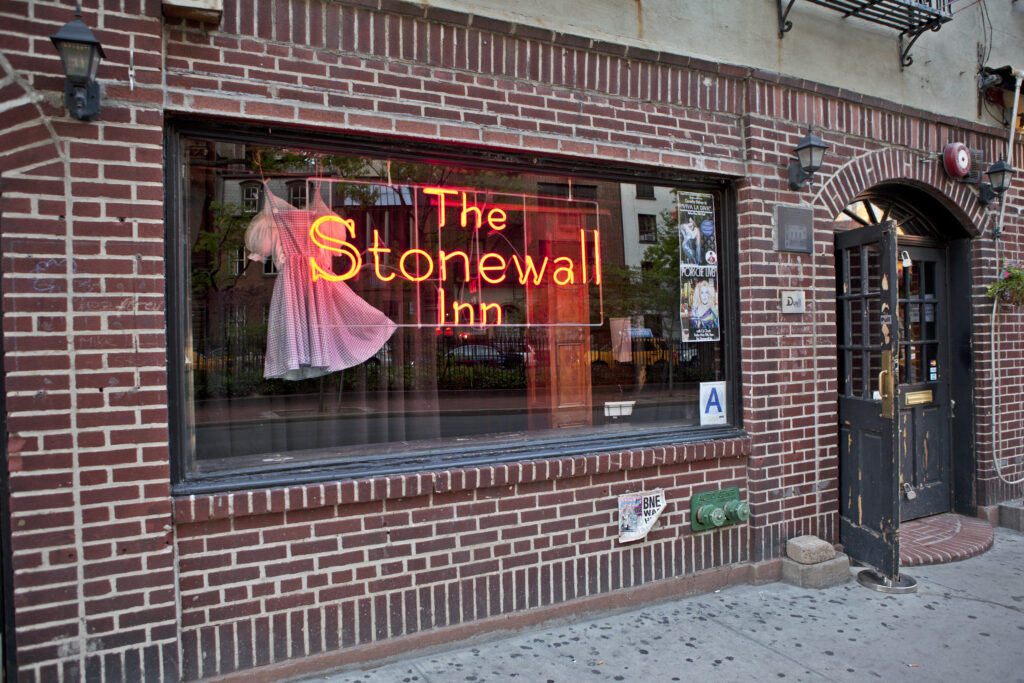
Pauli Murray Family Home (Durham, North Carolina)
In Durham, queer travelers should visit the childhood home of African-American civil rights pioneer Pauli Murray. Ahead of her time, Murray wanted to be a man, took hormones for a short period, but settled into life as an androgynous lesbian. Murray was the first Black woman to be ordained as an Episcopal priest. Her maternal grandparents’ home, now the Pauli Murray Center for History and Social Justice, is not only a public museum but also a National Historic Landmark.
Transgender Memorial Garden (St. Louis, Missouri)
Opened in 2015, the Transgender Memorial Garden is a fertile, greenspace originally located at 2800 Wyoming Street in the Benton Park West neighborhood of St. Louis. It has now moved to It is the first garden to memorialize the victims of anti-trans violence and to celebrate transgender lives. A project of the Metro Trans Umbrella Group, this Garden is the second of its kind in the world – the first is in Manchester, England. At the entrance of the memorial garden, don’t miss Greek poet Dinos Christianopoulos’ quote which says, “They tried to bury us. They didn’t know were seeds.”
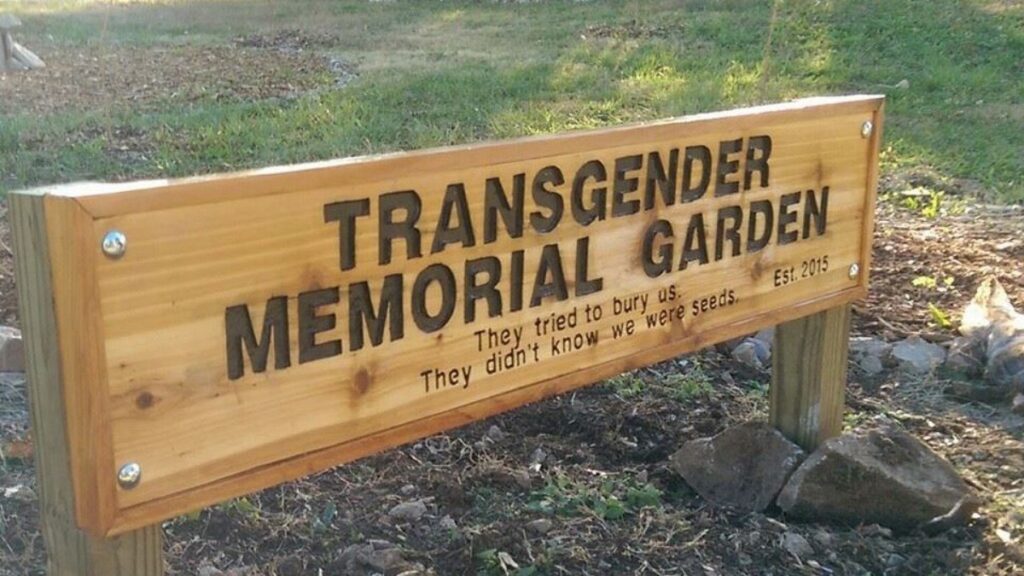
Walt Whitman House (Camden, New Jersey)
The Walt Whitman House is the last residence of the poet before he died in 1892. It was also where he completed some of his later work. According to the National Parks Service, it’s thought that Whitman was gay or bisexual because of his relationships and poetry because he was very active in the LGBTQ+ scene in the 19th century. Located at 330 Dr. Martin Luther King Jr. Boulevard, the Walt Whitman House is a public museum, where visitors can see some of the poet’s personal possessions, including a collection of rare photos.
Little Bighorn Battlefield National Monument (Crow Agency, Montana)
This area memorializes the U.S. Army’s 7th Cavalry, but the Little Bighorn Battlefield National Monument is also dedicated to indigenous people – specifically the Sioux and Cheyenne – and their last armed efforts to preserve their way of life. Lt. Col. On June 25-26, 1876, 263 soldiers, including George A. Custer and U.S. Army personnel, died fighting several thousand Lakota, and Cheyenne warriors. So, what’s the queer connection? Cheyenne male two spirits (he’emane’o), who dressed in women’s clothing, had important roles in the community in celebrating battle victories.
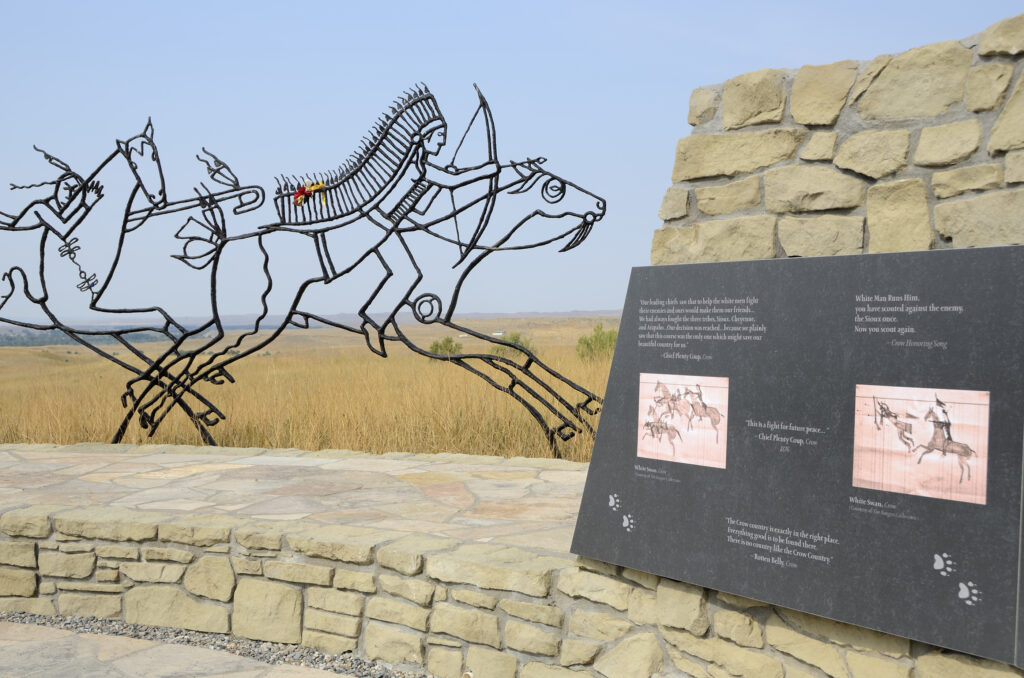
National AIDS Memorial (San Francisco)
Pink Triangle Park and Memorial and the GLBT Historical Society Museum are just a couple of sites every queer person should see when visiting San Francisco, a city rich in LGBTQ+ history. Visit the National AIDS Memorial, also known as “The Grove,” to see the thousands of names inscribed within the 10-acre living memorial to remember the lives lost to the pandemic. In addition to providing unique storytelling programs, like Surviving Voices, the Memorial is also home to the famous AIDS Memorial Quilt, with nearly 50,000 panels to commemorate the 150,000 lives lost to AIDS. Afterward, stop by Twin Peaks Tavern, touted as the first gay bar in the U.S., to raise a glass and remember this unforgettable time in Queer history.
Butt-Millet Memorial Fountain (President’s Park, White House, Washington, DC)
If you’ve seen the movie, Titanic, then you’re probably familiar with the fictional characters Rose and Jack, but in real life, Archibald Butt and Francis Millet perished aboard the RMS Titanic on April 15, 1912. Millet was an accomplished painter, sculptor, writer, and vice-chairman of the Commission of Fine Arts, responsible for the design and planning of the National Mall, located a short walk from the fountain.
Millet was married and a father of three, but also had several same-sex relationships in his life. Butt served as a military aide to both President Theodore Roosevelt and President Taft. According to the National Parks Service, the two men had been close friends and possibly romantically involved. The fountain is closed to the public.
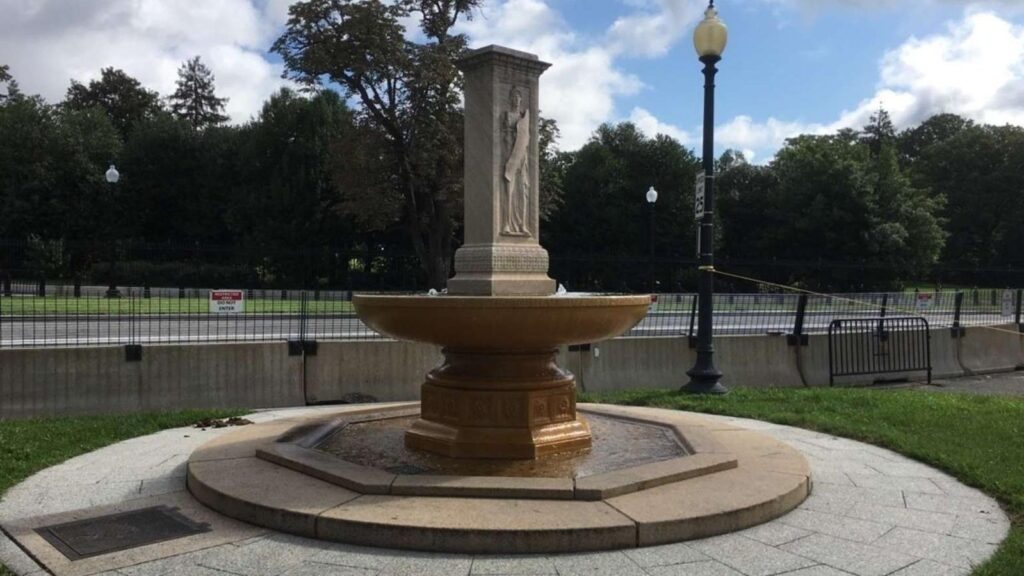
The Furies Collective (Washington, DC)
Established in the summer of 1971 in the District, The Furies Collective was a communal lesbian group that gave voice to lesbian separatism through its newspaper, The Furies. As an example of lesbian feminism that emerged from the women’s movement in the U.S. during the 60s and 70s, the Furies Collective was a group of 12 lesbian activists who lived together in one home that became an important LGBTQ+ historical site. Even though it’s a private residence and not open to the public, it is the first lesbian site on the list of the National Register of Historic Places.
Alan Turing Memorial (Manchester, England)
In the middle of Manchester’s Sackville Park, a bronze representation of Alan Turing sits patiently on a beach with an apple in hand. The plaque reads: “Father of computer science, mathematician, logician, wartime codebreaker, victim of prejudice.” You may recall that actor Benedict Cumberbatch in The Imitation Game portrayed the Englishman, who was prosecuted and chemically castrated for homosexual acts during the 1950s. The Turing statue – gaining greater fame after Queen Elizabeth II posthumously pardoned him in 2013 – is located near the city’s Beacon of Hope HIV/AIDS memorial.
While you’re in Manchester, you can check out 18 historic sites (including the Turing statue) on the LGBTQ Heritage Trail, also called the Out in the Past Trail. Each site is marked with small rainbow mosaics embedded into the pavement on the trail.
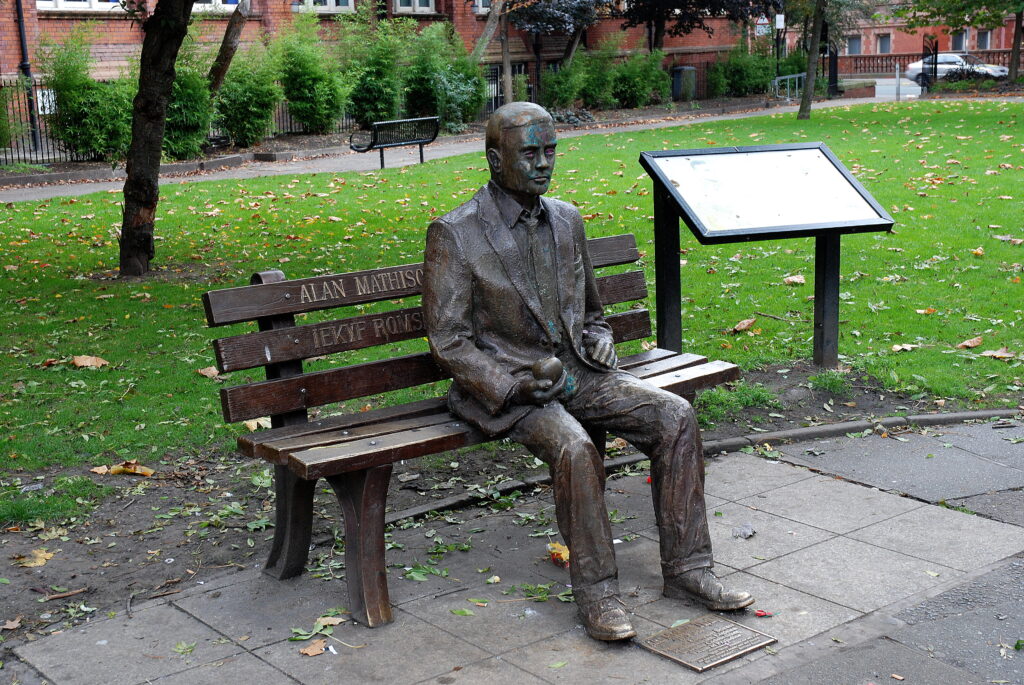
The Legacy Walk (Chicago)
For queer travelers visiting the Windy City, you may want to wait until warmer weather to embark on a historical journey down The Legacy Walk. This half-mile-long series of rainbow-adorned pylons line both sides of North Halsted Street in the gayborhood of Northalsted, formerly Boystown. Each column features two memorial plaques commemorating the life and work of LGBTQ+ individuals “whose achievements helped shaped the world,” according to Victor Salvo, the founder and executive director of the Legacy Project. The first 18 plaques were dedicated in 2012, and today, the plaques are periodically replaced with new markers. Older ones join the Legacy Project’s archives for a planned future museum and to use in a traveling Legacy Wall exhibit.
Homomonument (Amsterdam, Netherlands)
Unveiled in 1987, this unique installation was the world’s first public monument dedicated to the LGBTQ community, honoring victims of persecution and violence, both past and feature. Located on the bank of Amsterdam’s Keizersgracht Canal, the Homomonument is made up of three pink granite triangles are positioned to point to the city’s National War Memorial, the Anne Frank House, and the COC Netherlands LGBTQ advocacy organization. One of the triangles protrudes onto the water (built as steps ascending from the canal), one is installed at street level, and the other rises from the small plaza-like a groundswell of hope and courage.
If you’re in Berlin, consider visiting a monument in Tiergarten to commemorate the thousands of LGBTQ lives lost to Nazism before and during World War II. And in Australia, the Sydney Gay and Lesbian Holocaust Memorial – a pink enameled steel prism – is embedded in the earth and overlaps with triangulated black columns, which together form a fractured Star of David. This memorial is located in Green Park near the Sydney Jewish Museum.
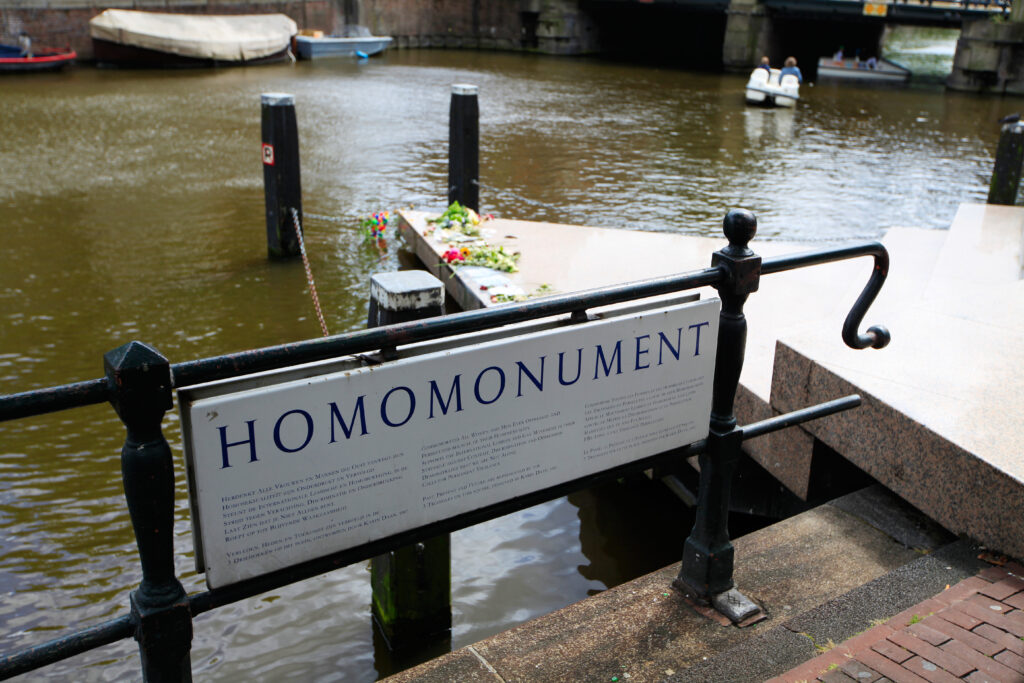
Vicksburg National Military Park (Vicksburg, Mississippi)
The Vicksburg National Military Park is a 40-minute drive from Jackson, Mississippi. The U.S. National Park is also where we remember Jennie Hodgers. Born in 1843, her pre-war life seems filled with controversies and scandal, but she immigrated from Ireland, possibly Belfast, to the United States. Eventually, she enlisted with the 95th Illinois Infantry under the name Albert Cashier and began her military career.

